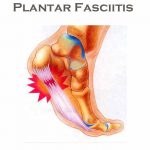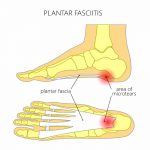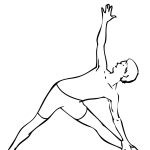 Plantar fasciitis affects more than 2 million people per year. If you have had it, you know that it can be extremely painful, keeps you awake at night, and makes it difficult to get around. In some cases, it lasts years, finally pushing the sufferer to seek help from a surgeon. Maybe you are not the surgery type and prefer to go about reducing your discomfort in a different fashion?
Plantar fasciitis affects more than 2 million people per year. If you have had it, you know that it can be extremely painful, keeps you awake at night, and makes it difficult to get around. In some cases, it lasts years, finally pushing the sufferer to seek help from a surgeon. Maybe you are not the surgery type and prefer to go about reducing your discomfort in a different fashion?
Some common treatment therapies for plantar fasciitis include: orthotics, losing weight, treating the site with ice and massage, steroid shots, and stretching the achilles tendon and plantar surface of the foot. But have you tried strengthening and stretching of the hips and legs? Good lower body mobility, and strength are required to keep you from putting excess load on your feet. Your feet are made to flex, bend, and twist, all while carrying the weight of your body. If your lower body is weak and tight, your feet carry the load. All of the force of your body gets stuck in your feet causing micro tears and inflammation all along the plantar surface. Couple all of this with poorly made or ill fitting shoes, and long hours of repetitive movements and Ouch! Plantar fasciitis here we come! This is a recipe for your feet to ache, burn, and rebel.
If you are suffering from plantar fasciitis that seems to not want to go away, try enrolling in a good stretch and strengthening class to increase your lower body strength and flexibility. With isolated movements, your hips will begin to distribute your body weight for you and reduce the pounding on those feet.
Keep reading for some great stretches and strengthening ideas for the treatment of plantar fasciitis. Remember to work within your fitness level, and hire a movement specialist to help you out with form if you are not sure what to do. It is important to be careful to now injure yourself more than you already are.
The Nuts and Bolts:
 The site of burning and aching that people feel is most often at the junction of the heel and where the arch of the mid foot begins. It travels the whole width of the foot but the epicenter is right in the middle of the foot at the front of the heel as it moves into the mid-foot.
The site of burning and aching that people feel is most often at the junction of the heel and where the arch of the mid foot begins. It travels the whole width of the foot but the epicenter is right in the middle of the foot at the front of the heel as it moves into the mid-foot.
These epi-center therapies always feel like a mixture of good and bad. It feels good to have the area treated, and some of the discomfort goes away for while, only to stick around and never really subside.
In order for the inflammation to subside, try working all the way up the chain-into the hips and core stabilizers. As we move through the day, our power to loco-mote and ability to stay balanced comes from the hips and core. These muscles work eccentrically to slow us down as we change planes- like stepping down a curb, or as we shift our weight as in walking on uneven terrain or turning a corner.
Weight Lifting:
Dumbbell Squats, Stiff Legged Dead Lifts, Good Mornings, Lunges, Calf Raises, Floor Hip Extensions
Yoga:
 Pigeon, Triangle, Gate Pose, Down Dog, Down Dog with Leg lifted to sky, Chair( Fierce ) Pose, Triangle, Forward Fold, Back of Leg-Big Toe Pose,
Pigeon, Triangle, Gate Pose, Down Dog, Down Dog with Leg lifted to sky, Chair( Fierce ) Pose, Triangle, Forward Fold, Back of Leg-Big Toe Pose,
Pilates:
Side Plank, Mermaid, Marching Bridge, Chair with side walking, One Legged Mini Squats,
Self Massage:
Tennis Ball in the Gluteal muscles, Bottoms of the feet with tennis balls and golf balls, Back of Calves, Proximal Hamstring Tendons, Distal Hamstring Belly and Fascia
Schedule a Professional Massage:
In order to get ahead of the healing process, we recommend you schedule a professional massage. Whether that is with your favorite massage therapist, or physical therapist who does manual therapy. It is important to support your muscles and connective tissue as you do these stretches and exercises.
Resources:
Strength Training Anatomy; Second Edition; 2006;
Human Kinetics, Frederic Delvier



